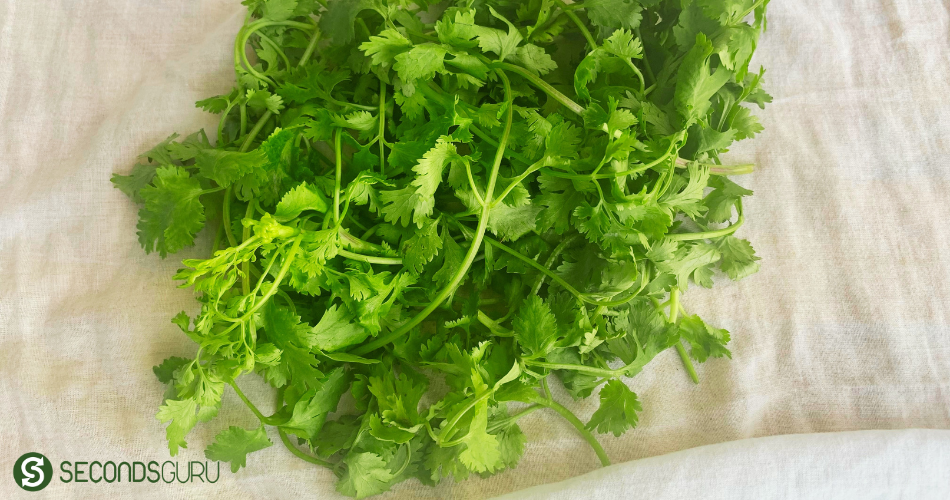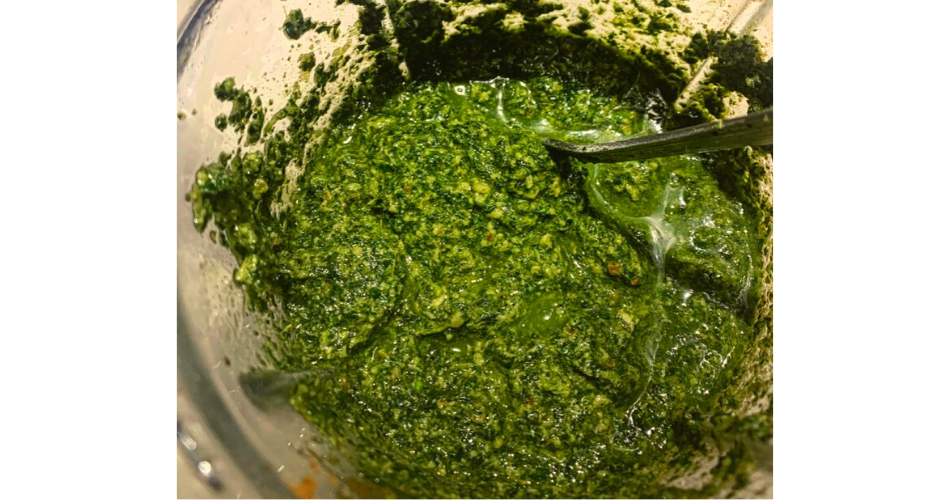Published 6 August 2021 ● Last Updated on 15 August 2021
Today’s article is a piece by Shweta Subramaniam, founder and owner of HipDips– a home based business that specializes in dips, chutneys and grilled cheeses (aka toasties). A graduate from the Culinary Institute of America, Shweta works as a full-time chef in addition to running her own business. She enjoys farm-to-table concepts and loves experimenting with fresh produce from the region. Read on to discover her tried and tested methods of storing fresh herbs to increase their life and retain their freshness.
Growing up in an Indian household, fresh produce was an integral part of our home cooking. I was taught to wrap up all kinds of vegetables and herbs in newspapers. I was told that it prevents the produce from drying out or wilting from the cold temperatures in the fridge. Now that I have learned more about food storage during my training as a professional chef, I realise that this practice is unhygienic and harmful. No one wants ink seeping into their fresh produce!
So what should be done to keep the leaves and veggies last long? More hygienic food wrappers include paper towels or cotton muslin cloths. Muslin cloths have an added advantage of being better for the environment, since they can be reused. The fabric can be washed and dried easily and used for other storage or cleaning purposes at home.

Basil
Beautiful, plush fresh basil can easily turn black due to oxidation. Warm temperatures and mishandling are the main causes for this to happen. Storing basil for optimal freshness can be easily done with these simple steps:
- Pluck the leaves and wash them in cool water. Discard any black/brown or mushy leaves. (Tip- You can save the stems and add it into your soup or stew for added flavor)
- Spin the leaves through a salad spinner.
- Lightly roll the leaves up with cotton muslin cloth and place it in a container. (This protects the leaves from getting frozen and also allows them to be moderately hydrated)
- Store them in the vegetable compartment of the fridge.
By following this method, basil would keep fresh for about 8-12 days.
To make basil last longer, you can also freeze basil for future use by blanching the leaves in boiling water, shocking them in ice water, draining the water out with a cotton muslin cloth, placing them in a zip-lock bag and freezing them down. One thing to note is that the quality will deteriorate after thawing the frozen leaves. So, this storage method is best used for leaves that will be blended or cooked.
Coriander
Coriander is generally a challenging herb to store. Choosing the best quality at the market is the first step to achieve a longer shelf life. Pick leaves with minimal discoloration; avoid any mushy, bruised leaves. Coriander leaves are normally quite wet as they are often misted in supermarkets and those packed in plastic bags, develop condensation over time. So, take some time to choose a bright green and perky leafed coriander to start off.
Placing this delicate herb in a chiller that is too cold, in room temperature or uncovered runs the risk of it wilting or turning yellow. Here are a couple of ways to store it well:
- Fill a jar with room-temperature water and loosely place the coriander stems and roots into it with the leaves protruding out. Cover the leaves loosely with a ziplock bag and place it in the chiller. Refresh the water once it starts to discolor.
- Wash the coriander in cool water. Then, pat it dry. Place them on a dry cotton muslin cloth / clean kitchen towel and roll up. Place it in a ziplock bag and seal it without trapping much air in the bag. Store in the chiller. Change the muslin cloth to a clean, dry one if it gets damp from the moisture formed whilst in the chiller.
- The freezing method suggested basil can also be applied to coriander – without the blanching process as coriander turns to a murky greenish- brown if it comes into contact with heat.

Vegan Coriander Pesto
What you need:
2 cups coriander (stems and leaves)
1/3 cup walnuts (roasted)
1/3 cup nutritional yeast
¼ cup extra virgin olive oil
¼ cup lemon juice
1 clove garlic
1 green chili (small)
½ tsp salt
What to do:
Couldn’t get easier than this! Simply combine, blend, and store in the fridge.
Mint
Unlike coriander, mint requires a cool and damp atmosphere. Mint leaves are still susceptible to bruising when mishandled despite being hardier than basil and coriander. Here are a few ways to store mint:
Wash the mint sprigs under cool running water and pat it dry with a clean, dry kitchen towel. Place the sprigs onto cotton muslin cloth and roll them up loosely. Transfer them into a zip-lock bag and into the chiller.
Wash the mint sprigs and pluck the leaves. Place a few leaves into each compartment of an ice cube tray. Top it off with water and freeze it down. You can dunk a few mint ice cubes into water, juice or soda and it would instantly refresh the whole flavor of the drink!
Bonus tip
If you’ve read thus far, you have earned a pro-tip that will work for a wide variety of herbs: you can also freeze them in olive oil (instead of water )! These are known as the great ‘Herb bombs’.

Follow these simple steps to make your own:
- Pluck the leaves of any herb you like (basil, coriander, mint, etc)
- Chop or leave them whole. *Chopping the herbs would release more flavors into the oil.
- Place the leaves/ chopped herbs into each compartment of an ice cube tray.
- Top with extra virgin olive oil.
- Freeze.
- To use: drop it into a hot bowl of soup, roasted vegetables, pasta or in stir-fries!
Want to be a little more fancy and take it to another level? – Feel free to add in other flavors into these bombs such as minced garlic, red chili flakes, crushed black pepper or lemon zest! You can also have a mixture of herbs instead of just one.
Related Articles
Natural Remedies | 5 healing plants to begin your herb garden
Eco Brands | 11 companies with fresh recipes to combat food waste
Sustainable Singapore | Your role in making our Little Red Dot food secure



0 Comments